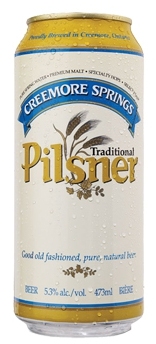This article was originally written in July 2007 for the food & drink website Taste T.O., and republished here in October 2011 (but back-dated to match the original publication date) after Taste T.O. was shut down and taken offline.
 Selections from the LCBO’s seasonal beer release for summer have recently started hitting the shelves, and as usual, the range on offer is somewhat meagre, although with nine beers planned to be included, at least it’s better than the pitiful spring release. And while more than half of them are fruit or flavoured beers, even a couple of those aren’t the cloying sugar-bombs that you might expect.
Selections from the LCBO’s seasonal beer release for summer have recently started hitting the shelves, and as usual, the range on offer is somewhat meagre, although with nine beers planned to be included, at least it’s better than the pitiful spring release. And while more than half of them are fruit or flavoured beers, even a couple of those aren’t the cloying sugar-bombs that you might expect.
As always, I’m looking forward to trying the several new beers in the release (although I have some trepidation about the Chapeau Banana Lambic – watch for my reaction to that in a future column), but it’s the return of a couple of favourites from past releases that has me the most excited. My “cellar” (a.k.a. a couple of cardboard boxes in the closet) will be getting restocked with a few bottles of the rich and complex Liefmans Goudenband once it arrives, but for immediate drinking satisfaction, I’ll be grabbing multiple bottles of the unique Dutch Pilsner, Christoffel Blond (LCBO 696955, $2.80/330 mL).
I first tried this beer a few years ago as part of a Christmas gift box where it was packaged along with a bottle of Christoffel’s Vienna-style lager, Robertus, as well as a very nice branded glass that still serves me well. While I enjoyed it at the time, it struck me as a beer that would be much better suited to warmer weather, so it was nice to see the Blond return on its own as part of the summer beer release for the last couple of years.
As noted above, Christoffel Blond is a somewhat unique version of a Pilsner, at least in comparison to the ones that most people are familiar with. The appearance is pretty much right on point, with a rich golden hue and a good sized snow white head. But the aroma reveals a stronger herbal and floral hop character than you might expect, with some candyish notes as well. The body is crisp and full and quenching, and the flavour is a tasty combination of sweet orange candy, sharp green herbs, and a refreshingly bitter citric finish.
It really is a perfect summer beer, although like all LCBO seasonal releases, stock is limited, so grab a bunch when you see them. And here’s a tip: it’s a fantastic beer for steaming mussels. Throw in some chopped tomatoes, onions, garlic, and various herbs; serve them with some frites and crusty bread to sop up the broth; and have a couple more bottles on hand to wash it all down. It’ll be one of the best meals of the summer, guaranteed.

 Back in 1987, just as Canada’s modern craft brewing scene was kicking off, a small brewery called
Back in 1987, just as Canada’s modern craft brewing scene was kicking off, a small brewery called 